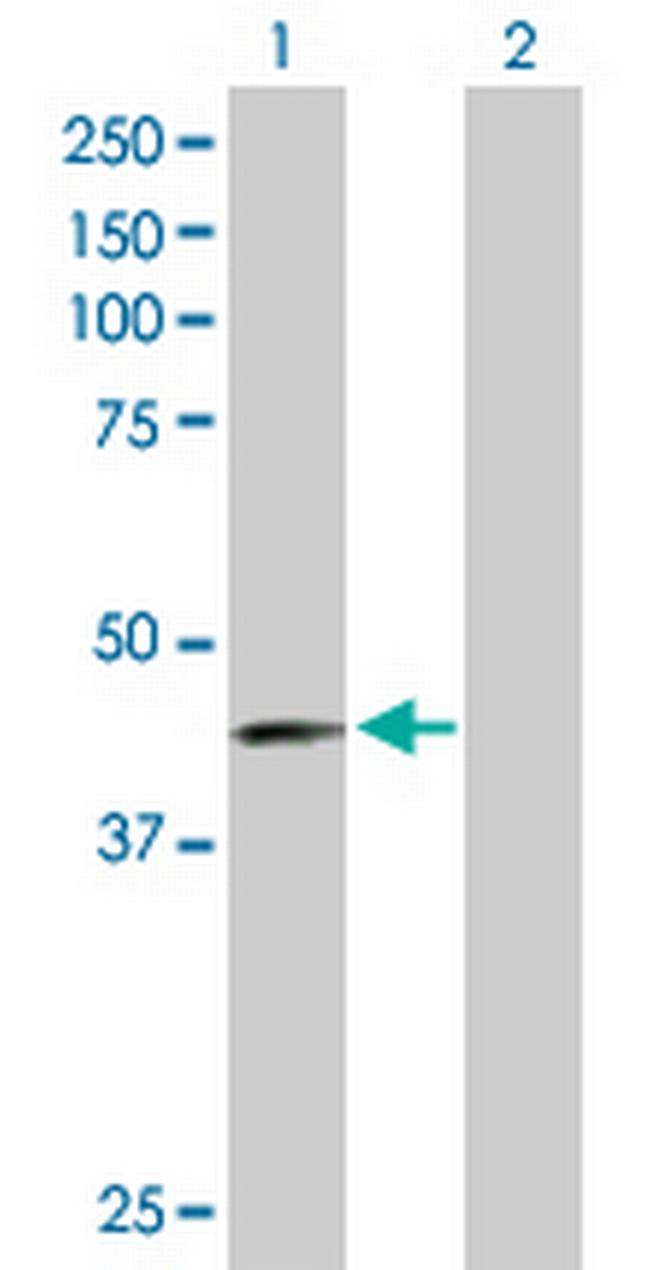Search Thermo Fisher Scientific
Product Details
H00025945-B01P
Species Reactivity
Host/Isotype
Class
Type
Immunogen
Conjugate
Form
Concentration
Purification
Storage buffer
Contains
Storage conditions
Shipping conditions
Product Specific Information
Product may be used with Western Blot (Transfected lysate).
The Isotype of this product is composed of an IgG Mixture.
Immunogen sequence: MARTLRPSPL CPGGGKAQLS SASLLGAGLL LQPPTPPPLL LLLFPLLLFS RLCGALAGPI IVEPHVTAVW GKNVSLKCLI EVNETITQIS WEKIHGKSSQ TVAVHHPQYG FSVQGEYQGR VLFKNYSLND ATITLHNIGF SDSGKYICKA VTFPLGNAQS STTVTVLVEP TVSLIKGPDS LIDGGNETVA AICIAATGKP VAHIDWEGDL GEMESTTTSF PNETATIISQ YKLFPTRFAR GRRITCVVKH QALEKDIRYS FILDIQYAPE VSVTGYDGNW FVGRKGVNLK CNADANPPPF KSVWSRLDGQ WPDGLLASDN TLHFVHPLTF NYSGVYICKV TNSLGQRSDQ KVIYISAYNS VASLNC
Target Information
Nectin-3 is a 83 kDa type I transmembrane glycoprotein. Nectin, originally isolated as poliovirus receptor-related protein (PRR), is a cell-cell adhesion molecule of the immunoglobulin supergene family. Nectins are calciumindependent immunoglobulin-like cell-cell adhesion molecules consisting of four members, nectin 1-4. Nectins homophilically and heterophilically trans-interact to form a variety of cell-cell junctions, including cadherin-based adherens junctions in epithelial cells and fibroblasts in culture, synaptic junctions in neurons, and Sertoli cell-spermatid junctions in testis, in cooperation with, or independently of, cadherins. Both nectin-2 and nectin-3 are ubiquitously expressed, whereas nectin-1 is abundantly expressed in brain. Nectin-2 and -3 are expressed in cells where cadherin is not expressed, such as blood cells and spermatids. All members of the nectin family have two or three splice variants. For nectin-3, three isoforms exist: nectin-3 alpha, -3 beta and -3 gamma, of which nectin-3 alpha is the largest. Nectin-3, also known as PRR3, is a transmembrane protein that is predominantly expressed in testis and placental tissues as well in many cell lines. Nectin interacts in vivo with both long and short isoforms of afadin, an actin binding protein, at cadherin-based cell-cell adherence junctions in various tissues and cell lines. Furthermore, the ectodomains of nectin-3 and CD155 (Poliovirus Receptor) have shown strong affinity to each other. Injection of antibody 103-A1 into lumen of seminiferous tubules leads to disruption of the actin filaments in Sertoli cells at the Sertoli-maturing spermatid ectoplasmic specialization and exfoliation of maturing spermatids form the seminiferous epithelium.
For Research Use Only. Not for use in diagnostic procedures. Not for resale without express authorization.
References (0)
Bioinformatics
Protein Aliases: CD113; CDw113; DKFZP566B0846; FLJ90624; nectin 3; Nectin cell adhesion molecule 3; Nectin-3; poliovirus receptor-related 3; Poliovirus receptor-related protein 3
Gene Aliases: CD113; CDW113; NECTIN-3; NECTIN3; PPR3; PRR3; PVRL3; PVRR3
UniProt ID: (Human) Q6NVZ3
Entrez Gene ID: (Human) 25945

Performance Guarantee
If an Invitrogen™ antibody doesn't perform as described on our website or datasheet,we'll replace the product at no cost to you, or provide you with a credit for a future purchase.*
Learn more
We're here to help
Get expert recommendations for common problems or connect directly with an on staff expert for technical assistance related to applications, equipment and general product use.
Contact tech support

